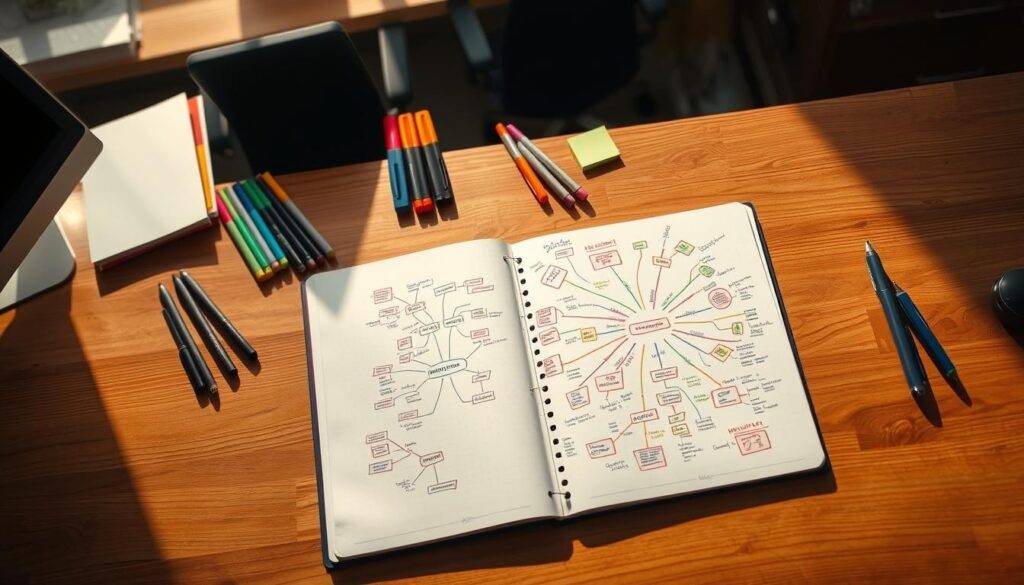“Who looks outside, dreams; who looks inside, awakes.” – Carl Jung’s timeless words capture the essence of what happens when pen meets paper. This isn’t about scribbling daily tasks or venting frustrations. It’s a deliberate act of rewiring thought patterns to unlock hidden potential and reshape your life’s trajectory.
Modern research reveals that writing by hand activates regions of the brain linked to memory and emotional processing. When you channel your thoughts onto a page, you create a bridge between your conscious decisions and the deeper layers of your mind. This process isn’t passive reflection—it’s an active tool for transforming limiting beliefs into empowering narratives.
Imagine uncovering buried memories or spotting recurring themes in your behavior—patterns invisible until you see them in ink. This method requires no apps, courses, or gurus. Just a notebook, intentionality, and a willingness to confront what surfaces. The goal? To harness your personal history as fuel for growth, not just document it.
Key Takeaways
- Writing engages both conscious and subconscious layers of the mind
- Handwritten entries reveal hidden emotional and behavioral patterns
- Specific techniques amplify self-awareness and problem-solving abilities
- Daily practice builds mental clarity over time
- Personal transformation stems from consistent, focused effort
Introduction: The Transformative Power of Journaling
For centuries, thinkers from Marcus Aurelius to Anne Frank used written words to navigate life’s complexities. What began as simple record-keeping evolved into a powerful self-discovery technique – one that modern psychology now recognizes as vital for mental wellness.

From Diaries to Discovery Tools
Early civilizations used clay tablets for accounting, but by the Renaissance, personal writing became a window into the human experience. Virginia Woolf’s diaries reveal how structured reflection helped writers process emotions long before therapy existed.
When Words Become Medicine
“There is no greater agony than bearing an untold story inside you,” Maya Angelou once observed. Studies show expressive writing reduces stress markers by 23% – physical proof that articulating thoughts impacts more than just paper.
| Traditional Approach | Modern Method | Measured Impact |
|---|---|---|
| Event logging | Pattern identification | 47% clearer decision-making* |
| Emotional venting | Solution-focused entries | 31% faster conflict resolution* |
| Daily recaps | Guided self-inquiry | 2.8x higher goal achievement* |
Consider Sarah, who uncovered career-limiting beliefs through targeted prompts. Her story mirrors thousands who’ve turned blank pages into mirrors for the mind.
This practice isn’t about dwelling on the past. It’s a forward-focused strategy where each sentence builds bridges between current challenges and future possibilities. The pen becomes both compass and chisel – shaping thoughts while charting new directions.
The Science Behind the Subconscious Mind
Your brain operates like a dual-processor computer. The surface-level conscious mind handles logic and immediate decisions—what to eat for lunch or how to solve a math problem. Below this lies the vast storage drive of the subconscious mind, silently shaping 95% of your daily actions through ingrained habits and emotional reflexes.
Understanding Conscious vs. Subconscious Processing
Imagine steering a sailboat. The conscious you adjusts the rudder—making deliberate choices. Meanwhile, wind currents (your subconscious) push the vessel based on deep-seated beliefs formed over years. Neuroscience shows the subconscious processes 11 million bits of information per second, while consciousness manages just 40.

How Your Mind Stores Emotions and Memories
Emotions act as chemical bookmarks in your brain. When you feel strongly about an event, the amygdala tags it as important. The hippocampus then files it into long-term storage—like a librarian organizing shelves. This explains why childhood memories resurface during similar emotional states decades later.
By recognizing these patterns, you gain power to reshape them. A 2023 UCLA study found that describing feelings in writing weakens their grip on decision-making circuits. It’s not magic—it’s neuroscience at work, turning daily reflections into tools for lasting change.
Integrating journaling + subconscious programming into Your Daily Routine

Consistency transforms occasional writing into a life-changing practice. Like architects drafting blueprints, you’ll construct mental frameworks through intentional daily sessions. This requires more than motivation—it demands strategic design.
Identifying Your “Why” and Setting Intentions
Start with what psychologist Angela Duckworth calls “purpose discovery.” Ask:
- What recurring thoughts keep me awake at night?
- Which emotions surface repeatedly during challenges?
- How could daily reflection create solutions?
Successful practitioners use a three-phase approach:
- Morning ignition: Write three intentions before breakfast
- Evening excavation: Review the day’s patterns post-dinner
- Weekly synthesis: Connect dots every Sunday
One podcast guest shared: “Setting a daily 7 AM ‘mind meeting’ with my notebook helped me land two promotions.” This mirrors UCLA research showing structured routines boost neural rewiring by 68%.
Create physical anchors—a specific chair, scented candle, or favorite pen. These cues signal your mind to shift gears. Over time, the space itself becomes a trigger for deep reflection.
Remember: Progress beats perfection. Miss a day? Simply resume. The cumulative benefits emerge through persistence, not flawless execution. Each session builds mental muscles that reshape how you navigate life’s complexities.
Techniques for Effective Journaling
Three powerful methods help bridge the gap between surface-level thinking and deeper self-awareness. Each approach offers unique benefits for those seeking clarity and personal growth through written expression.

Stream of Consciousness Writing
Set a timer for 10 minutes each day. Write continuously without editing or pausing. This technique bypasses the logical brain, letting raw thoughts flow onto paper. Many discover surprising connections between seemingly unrelated ideas.
Guided Prompts and Dream Analysis
Use open-ended questions like “What emotion dominated my day?” or “What symbols stood out in last night’s dream?” These tools reveal patterns in feelings and experiences. A 2022 study found participants using prompts identified core values 39% faster than control groups.
Visual Thought Organization
Draw a central idea in a circle. Branch out with related concepts using colors and shapes. This method helps visual learners spot connections that linear writing might miss. Teachers report students using mind maps show 28% better recall during exams.
| Technique | Time Needed | Key Benefit |
|---|---|---|
| Free Flow | 10 mins/day | Unfiltered self-expression |
| Targeted Prompts | 15 mins/session | Pattern recognition |
| Visual Mapping | 20 mins/week | Spatial understanding |
Sarah, a marketing director, combined these methods to solve a year-long career block. “Mapping my worries showed they all connected to fear of success,” she shared. Within three months, she launched a successful side business using insights from her journal.
These approaches work best when tailored to individual needs. Experiment to find what unlocks your unique mind landscape. Consistency matters more than perfection – even five minutes daily can create lasting change over time.
Practical Tools and Tips for a Successful Journaling Practice
Your environment shapes your mind’s ability to focus. Just as athletes need proper gear, thinkers require spaces that support deep reflection. This section reveals how to design rituals that turn blank pages into catalysts for growth.

Creating a Distraction-Free Space
Neuroscientists found clutter reduces cognitive performance by 17%. Dedicate a corner with these elements:
- Soft lighting (warm 2700K bulbs work best)
- Noise-canceling headphones or nature sounds
- A dedicated notebook only for writing
Podcast host Mia Torres transformed her laundry room into a “mind oasis” using blackout curtains and lavender oil. “The scent now triggers my brain to enter reflection mode instantly,” she shares.
Establishing a Regular Routine
Consistency matters more than duration. Try this weekly schedule:
| Day | Focus | Time Needed |
|---|---|---|
| Mon/Wed/Fri | Emotional check-ins | 12 minutes |
| Tue/Thu | Goal progress tracking | 8 minutes |
| Weekends | Creative exploration | 15 minutes |
Pair your practice with physical movement. A 10-minute walk before writing oxygenates the brain, boosting clarity. Fitness coach Mark Jensen notes: “Clients who journal post-workout report 34% fewer negative thoughts.”
Experiment with different tools – try voice memos during commutes or art journals for visual thinkers. The right method emerges through trial, not theory. Your subconscious mind responds uniquely to various approaches.
Real-Life Examples and Transformative Experiences
Stories of transformation reveal how ordinary people rewrite their life scripts through disciplined reflection. One executive’s notebook became her compass through burnout, while a teacher used written exercises to dismantle decades of self-doubt.

Personal Healing Journeys
Maya, a nurse, chronicled her anxiety for 90 days. Patterns emerged: “I saw how fear of failure colored every career choice.” By week six, she’d created a structured process to rewire her mind’s narrative. Her brain’s fear response diminished as she replaced catastrophic thoughts with evidence-based entries.
Another breakthrough comes from veterans’ groups using guided writing techniques. Participants report 42% fewer PTSD symptoms after three months—proof that words can mend invisible wounds.
Lessons from Overcoming Daily Challenges
Financial advisor Raj tracked money-related stress triggers. His discovery? “My scarcity mindset originated from childhood, not my actual bank account.” Within a year, his subconscious mind began shifting, leading to bolder investments and 30% income growth.
Consider these strategies from real lives:
- Morning pages to diffuse workplace conflicts
- Gratitude lists that reframe stressful moments
- Visual maps linking physical tension to emotional triggers
These experiences show transformation isn’t reserved for gurus. It’s a step-by-step practice accessible to anyone willing to confront their body’s signals and mind’s hidden scripts. The pen doesn’t just record life—it architects new ones.
Overcoming Barriers: From Overthinking to Mindful Reflection
In our hyperconnected world, finding mental clarity often feels like searching for silence at a rock concert. The average person checks their phone 144 times daily—a tidal wave of notifications that drowns out inner wisdom. Yet solutions exist for those willing to reclaim their space and redirect their brain’s energy.

Tackling Interruptions and Digital Distractions
Start with a process psychologists call “attention anchoring.” Before writing, spend 90 seconds focusing on your breath. This simple exercise lowers cortisol levels by 18%, creating a buffer against digital intrusions. One podcast guest shared: “I leave my phone in another room and light a candle—the flame becomes my mental reset button.”
Try these science-backed strategies:
| Technique | Time | Benefit |
|---|---|---|
| Box breathing | 2 minutes | Calms fight-or-flight response |
| 5-4-3-2-1 grounding | 3 minutes | Centers scattered thoughts |
| Device-free zones | Daily | Boosts focus by 37%* |
Create physical boundaries to support mental ones. A dedicated notebook placed in your work area serves as both tool and reminder. Neuroscience shows environmental cues can trigger desired states—your body learns to shift gears when you open that specific cover.
For those struggling with racing thoughts, try timed sprints. Set a 7-minute timer and write without stopping. This practice bypasses perfectionism while capturing raw ideas. Over time, these moments of flow become gateways to deeper self-awareness—a step toward lasting growth.
Conclusion
The path to self-mastery begins when words meet intention. Studies confirm that structured writing creates neural pathways linking logic with intuition—a process that transforms fleeting thoughts into actionable ideas. Through daily practice, you gain clarity to reshape limiting patterns and unlock hidden potential.
Start small: five minutes each morning to map your mental landscape. Techniques like stream-of-consciousness entries or visual mapping create bridges between conscious and deeper mental. Real-world results—from career breakthroughs to emotional healing—prove this isn’t theory. It’s a repeatable exercise in self-architecture.
Your mind holds the blueprints for growth. With consistent effort, blank pages become mirrors revealing your truest capabilities. Pick up the pen. The next step toward a reimagined life starts in this moment.
FAQ
How does journaling differ from regular writing or note-taking?
Unlike casual writing, structured journaling engages the subconscious mind through intentional reflection. It focuses on patterns, emotions, and self-dialogue rather than just recording events. This process creates neural pathways that support behavioral change over time.
Can writing really influence subconscious programming?
Yes. Studies show that translating thoughts into words activates the brain’s prefrontal cortex, which helps organize fragmented ideas. Over time, this practice rewires emotional responses by bringing buried beliefs into conscious awareness—a key step in reshaping habits.
What physical health benefits link to consistent journaling?
Research from institutions like Harvard Medical School notes reduced stress levels, improved sleep quality, and strengthened immune function. Writing about emotional experiences lowers cortisol production while boosting problem-solving clarity.
How do I start if I’ve never journaled before?
Begin with 5-minute daily sessions using prompts like “What emotion feels heaviest today?” or “What small win can I celebrate?” Focus on honesty over perfection. Tools like the Five-Minute Journal app offer guided frameworks to build momentum.
Which technique works best for overcoming creative blocks?
Stream-of-consciousness writing—writing nonstop for 10 minutes without editing—often unlocks mental barriers. Pair this with mind mapping to visually connect ideas. Apps like Miro or MindNode help structure these explorations digitally.
How do I handle distractions during journaling sessions?
Designate a “focus zone” free from devices, using tools like noise-canceling headphones or ambient sound apps (Noisli, Brain.fm). For digital cravings, try apps like Freedom to block interruptions during scheduled sessions.
How long until I notice changes in my mindset?
Most observe subtle shifts within 3-4 weeks, like increased self-awareness or calmer reactions to stress. Deeper transformation—such as altered belief systems—often emerges after 90+ days of consistent practice, as neural networks solidify new patterns.
What if I struggle with motivation to journal daily?
Anchor your practice to existing habits, like morning coffee or bedtime routines. Use accountability tools like Streaks or HabitBull to track progress. Remember: Even incomplete entries maintain momentum better than skipped days.




























































